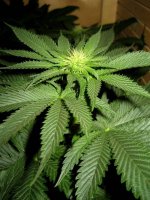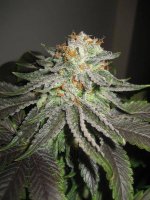But it isn't a compost pile h.h. Yes, adding green mulch will EVENTUALLY break down and add nitrogen to your mix. But while it is in the process of being decomposed, bacteria will be using N reserves in the soil, which would have otherwise been available to your lovely cannabis plant.
The point that I am trying to make is that there are much better ways to supplement N your grow, whether it be amending with alfalfa/blood meal, watering with fish emulsion, or using FPEs.
Mulch with decomposed organic matter. Isn't this forum about modeling our grows as close to natural processes as possible? Mulches occur in nature usually in the form of large piles of dropped leaves. Like JayKush has said, it doesn't get much better than decomposed leaf litter.
Cheers, all
Lilman
the compost pile is the imitation, not the other way around. A living system eats and breathes and drinks, and in outdoor temperate systems, it even sleeps and wakes.
all you need is a bit of alfalfa top dressed, and N-robbing is a non-issue. Especially If you are running no-till perpetual containers, mulch is important. It's not just about having the right chemicals around, it's about your soil actively decomposing and absorbing dead matter. It's about soil being alive, and therefore hungry.
another way to state this, is that you just need to keep things bacterial enough for fungi to have forage near the surface.






